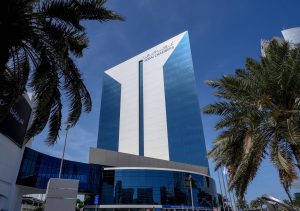Prabhu Ramachandran, CEO at Facilio, tells us how effective strategies and appropriate digital tools will be critical for property management teams to deliver the response required to contain COVID-19:
The global response to the COVID-19 crisis can be summed as a race against time requiring strict adherence to protocol. A world reeling under the impact of a highly contagious and potentially lethal virus is reconsidering everything from personal hygiene and casual contact with surfaces, to the minimum safe proximity to maintain with others. With prevention being the only viable response to containing the pandemic, in the absence of an effective vaccine, more than one-third of the global population is currently living under strict self-quarantine guidelines.
Securing buildings from the threat of the virus has fallen on the shoulders of facility management (FM) teams. However, safeguarding occupants, as well as their own onsite teams, is a multifaceted challenge for the FM industry. The unprecedented operational requirements include stringent and far more frequent than usual sanitization, keeping track of visitors and occupants for retrospective analysis, remote operations where possible, and sharing of real-time data among all stakeholders. The criticality of these processes being optimal has never been greater, nor the stakes higher. A clearly articulated game-plan and leveraging appropriate technologies are the need of the hour.
Awareness empowers and reassures
With best practices, executed with the highest possible consistency, being crucial to collective safety, building owners, FM teams and occupants need effective communication, to achieve optimal results. Not only does disseminating information from credible and authenticated sources – such as the WHO and national healthcare bodies – empower all concerned, sharing the status of specific facilities and areas is also crucial in inspiring confidence among those onsite. User personalized apps, which constantly update and convey this information, are emerging as a highly effective tool in this context.
Data-driven decision making is essential to success
With so much riding on staying one step ahead of COVID – 19, informed and accurate decisions are of the essence. Complete granular transparency into every aspect of operations, gained through sensors, cameras and access control, needs to be leveraged effectively. Collating this data using IoT technology – to track asset performance, inventory and footfall – empowers managers, supervisors and onsite staff to be agile and responsive in their efforts.
Running remote BMS/BAS operations keeps workforces safe
One of the keys to ensuring the safety of FM teams is reducing the number of staff working in the same space, to ensure social distancing protocols are maintained. IoT, Cloud and Mobility technologies come into play, in this context, to enable aspects such as BMS operations, and the monitoring and control of onsite equipment to be executed remotely, with minimal disruption, and no discernable compromise in quality.
Diligent disinfection needs to be at the core of the response
Technology is pivotal to gaining a centralized view of cleaning routines, hygiene violations and footfall, as well as translating this data into actionable insights, to enable the kind of fool-proof sanitation this crisis demands. For instance, tracking a drop in the consumption of hand sanitizers might instigate a renewed call for occupants to adhere to strict hygiene guidelines. Likewise, real-time data on the frequency with which common areas and surfaces – such as lobbies, restrooms, door knobs, elevators, handrails etc. – are disinfected, can lead to better secured spaces.
Tracking footfall
One of the challenges that combating the spread of COVID – 19 presents is that infected persons can remain asymptomatic for up to two weeks. Diligent records of the whereabouts of visitors, occupants and onsite staff can help in retrospectively tracing the areas and persons that may have been infected by an individual that tests positive. Here again technology can help create instant and accurate records, which are also easily searchable.
Facilities management teams are the heroes we are turning to
With the constantly evolving threat the COVID-19 contagion represents, FM professionals need to focus on adapting, expediting and optimizing their processes, as required. Their efforts can make the difference, when ensuring our buildings remain safe havens and don’t become the medium for infection to spread rapidly. Coordination, effective strategies, data empowered decision making and consistent implementation of best practices is the only hope to ‘flatten the curve’, in the number of new infections. The challenges are many and the standards to be adhered to high, but clear-minded strategies, uniform implementation of procedures and recruiting appropriate technologies will help FM teams lead the mission-critical response.











